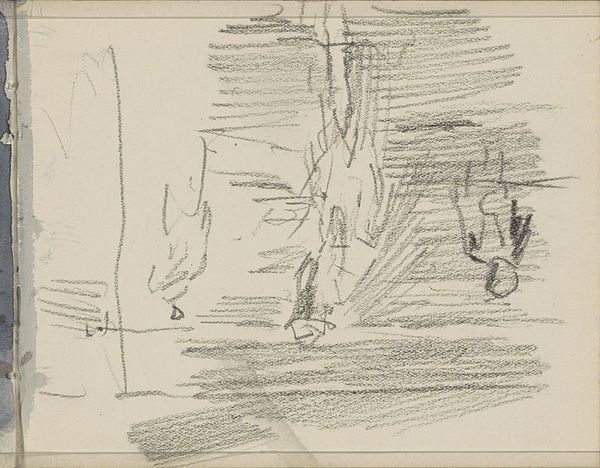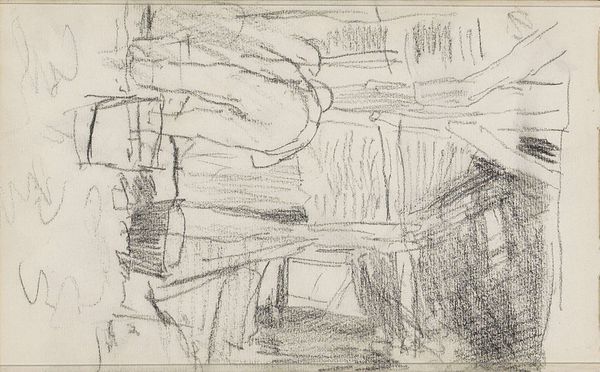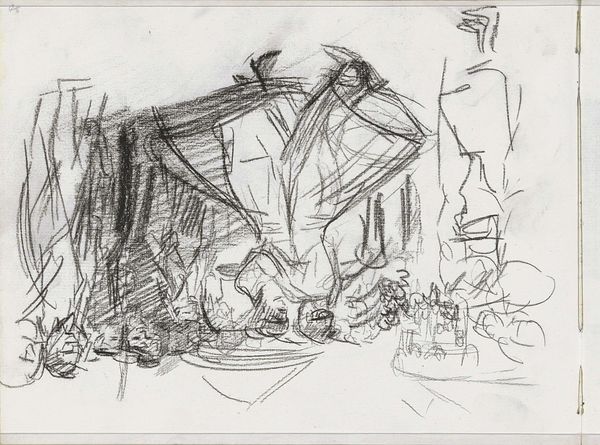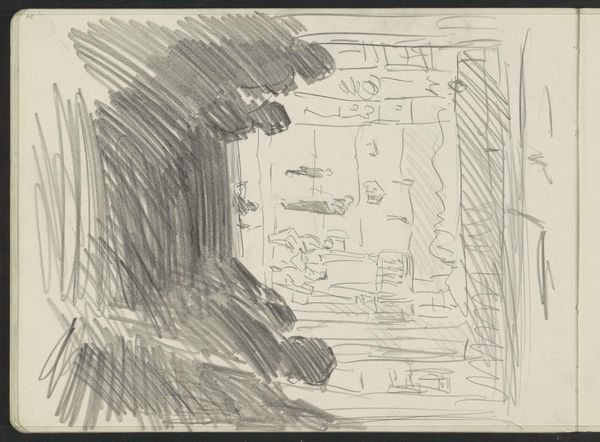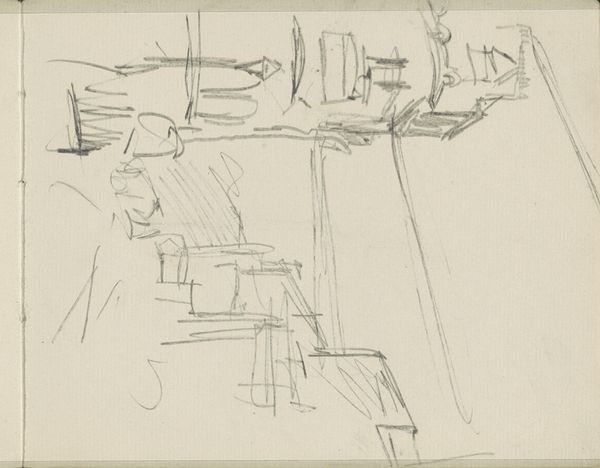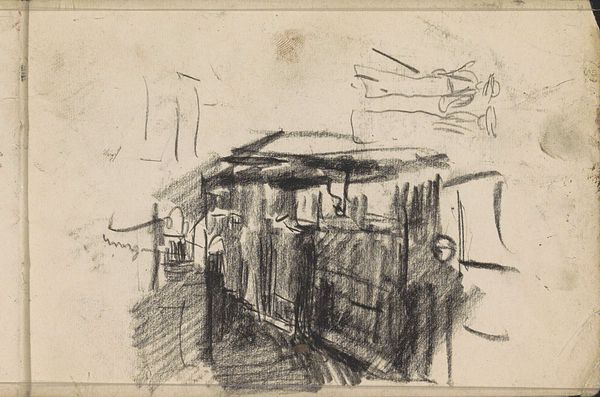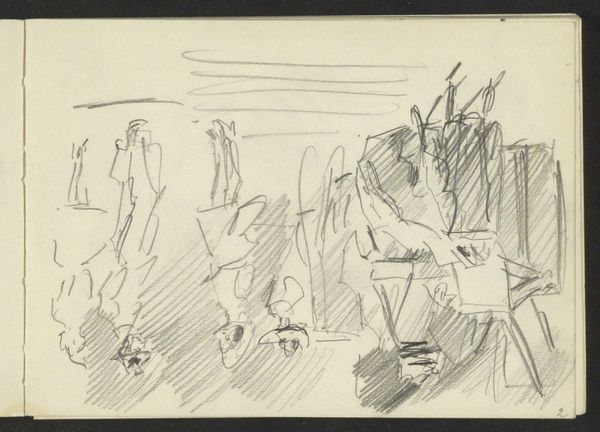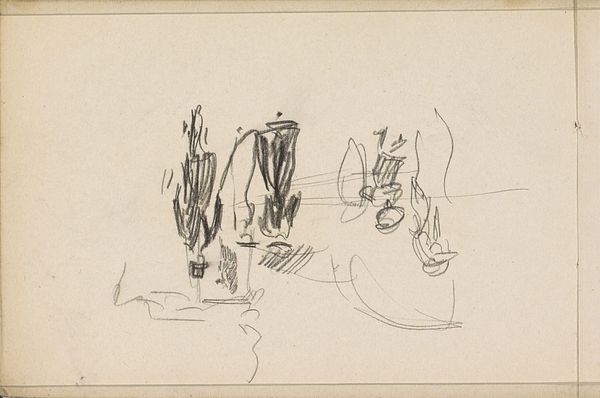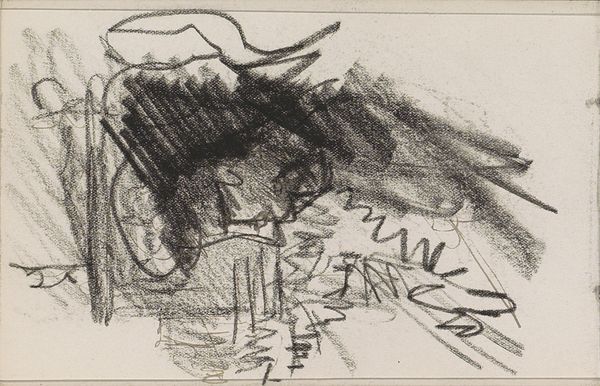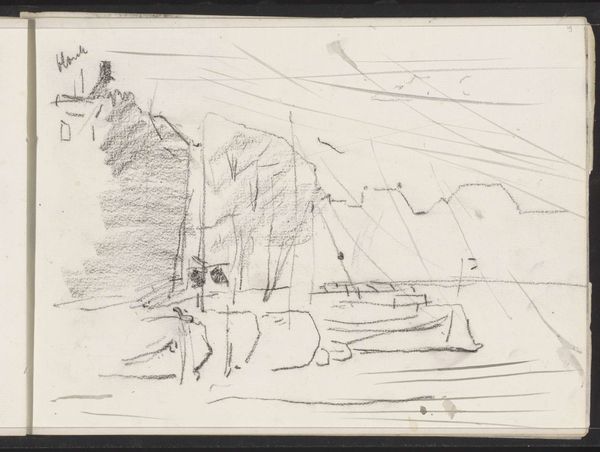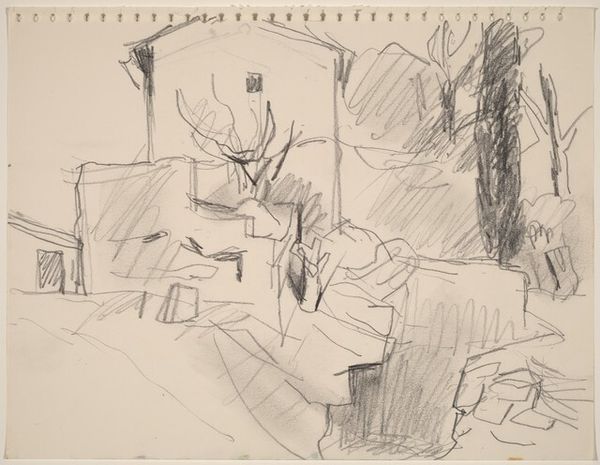
drawing, charcoal
#
drawing
#
landscape
#
figuration
#
charcoal
#
realism
Copyright: Rijks Museum: Open Domain
Curator: Johan Antonie de Jonge's charcoal drawing, "Strandgezicht met figuren en strandstoelen," or "Beach Scene with Figures and Beach Chairs," dates from around 1920. Editor: A stark, almost melancholic rendering. The monochromatic palette and sketchy quality give it a sense of immediacy, like a fleeting memory captured in charcoal. Curator: The artist’s focus here lies not in meticulous detail, but in the rhythmic repetition of forms. The lines defining the beach chairs and figures create a sense of spatial depth, even though the composition lacks strong perspectival cues. The formal relations take precedence. Editor: Those beach chairs are interesting symbols. The beach itself represents leisure, of course, and these ordered rows of chairs speak to a desire for structure within that leisure. Think about the rising middle class during that period and their need to relax in an organized and accepted environment. Curator: I find it more intriguing that de Jonge reduces figures to mere suggestions, almost spectral presences. Their facelessness disrupts a narrative reading and underscores their integration into the structural landscape, part of a geometric organization on the page. Editor: I see more than mere geometry, even if rudimentary. A faceless figure has multiple meanings that might represent universality; the absence of detail allows us to see ourselves and our feelings when going to the beach. Curator: A valid point, and perhaps that resonance with the viewer derives from the limited, somewhat unfinished execution. It invites the mind to wander into a series of personal details the artist declines to represent on the paper. Editor: These chairs can also imply a barrier between us and nature, or represent order amidst nature’s chaos. We bring objects, our order, onto something much older than ourselves. Perhaps Jonge is speaking of cultural imposition even in places that promise recreation and release. Curator: Or is Jonge concerned instead with the pictorial consequences of this arrangement of lines and tones? I appreciate you drawing connections to cultural history; however, one can argue de Jonge seeks less to encode specific symbols than to pursue the intrinsic visual relationships in his artistic tools. Editor: Well, it’s often in art's intentional deployment of forms that unconscious, but universally known, symbol systems are most powerful, wouldn’t you agree? We imbue objects like chairs, which appear here over and over, with layers of emotional information. Curator: Regardless, de Jonge offers us not so much a transcription as an articulation of mood, an echo of the sea captured with remarkable simplicity, and, may I add, it leaves the observer enough space to contemplate.
Comments
No comments
Be the first to comment and join the conversation on the ultimate creative platform.

